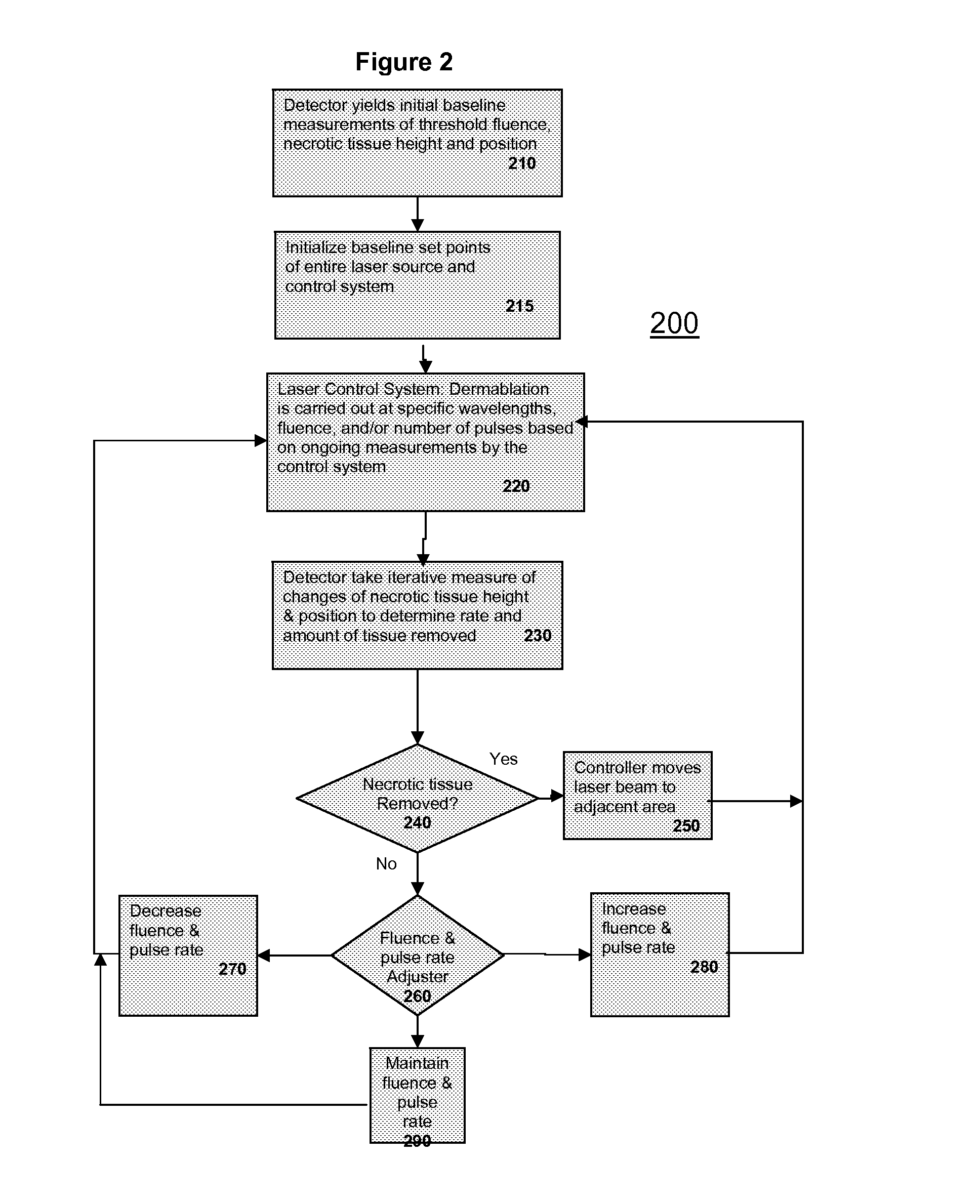System and method for modification and/or smoothing of tissue with laser ablation
- Summary
- Abstract
- Description
- Claims
- Application Information
AI Technical Summary
Benefits of technology
Problems solved by technology
Method used
Image
Examples
Embodiment Construction
[0028]The present invention is an improved system and method for removing tissue using laser ablation. The system comprises a first laser beam source capable of emitting a first laser beam having a first wavelength within a first wavelength range, a variable first integrated fluence sufficient to ablate tissue, and a pulsed (not continuous) output. The system further comprises a first adjustor for adjusting the first integrated fluence. A first laser positioner manipulates the first laser beam to be movably positioned over one or more surfaces of the tissue at two or more points of surface irradiation, and the first integrated fluence at the points of surface irradiation vary as the first laser beam position changes, so that the first laser beam at a first integrated fluence level ablates one or more first layers of the tissue at one or more first points of surface irradiation and the first integrated fluence adjustor changes the first integrated fluence to one or more second integr...
PUM
 Login to View More
Login to View More Abstract
Description
Claims
Application Information
 Login to View More
Login to View More - R&D
- Intellectual Property
- Life Sciences
- Materials
- Tech Scout
- Unparalleled Data Quality
- Higher Quality Content
- 60% Fewer Hallucinations
Browse by: Latest US Patents, China's latest patents, Technical Efficacy Thesaurus, Application Domain, Technology Topic, Popular Technical Reports.
© 2025 PatSnap. All rights reserved.Legal|Privacy policy|Modern Slavery Act Transparency Statement|Sitemap|About US| Contact US: help@patsnap.com



